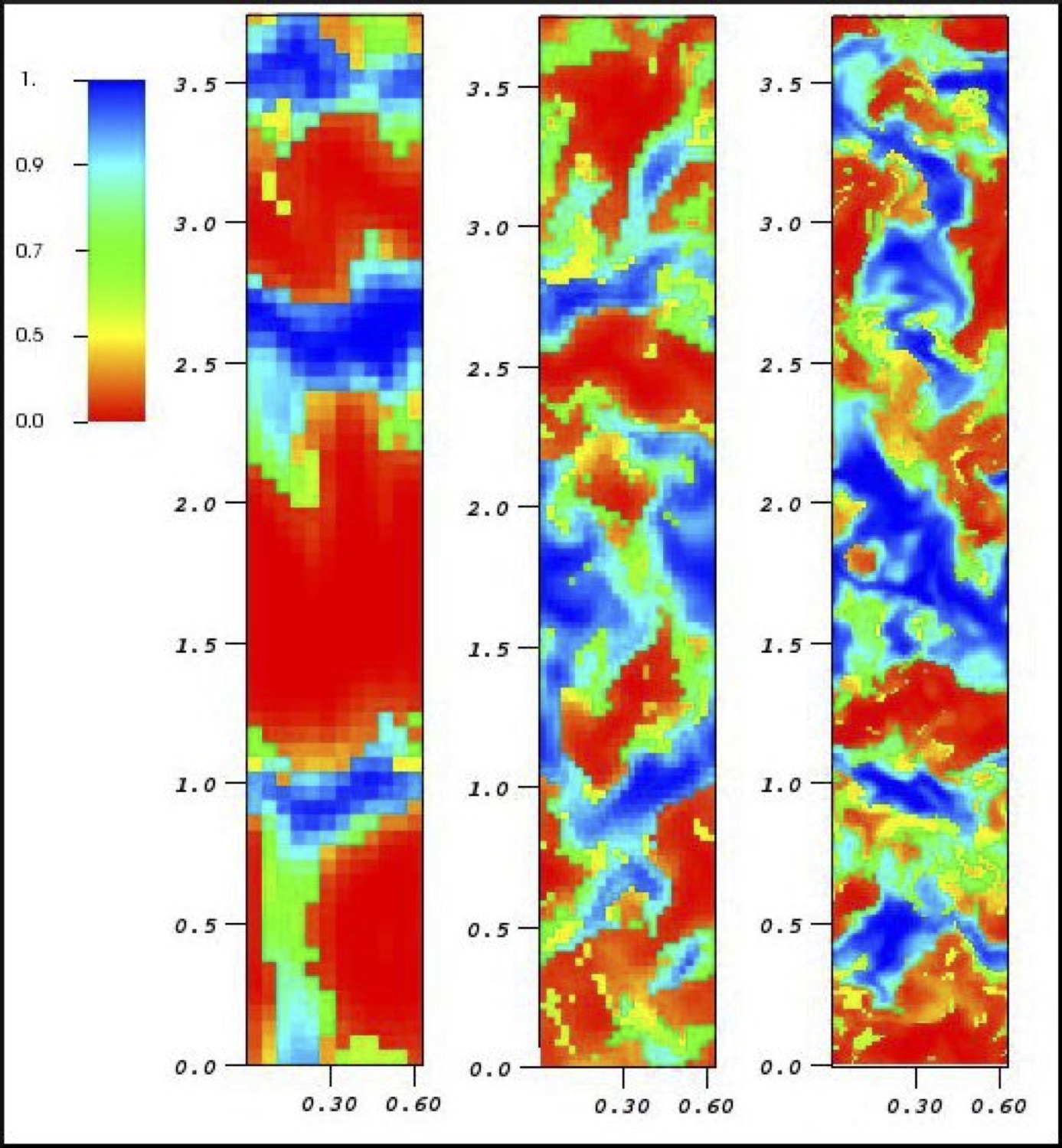Mathematics
The work of the Computational and Applied Mathematics research group of Kaman at the University of Arkansas involves understanding of turbulent mixing processes. During the last decades, accelerated interfaces between fluids have been studied to understand the dynamics of fluids and the physical instability mechanism on a wide range of scientific and engineering applications such as supernova explosions and inertial confinement fusion.
High-performance computing resources are used for the numerical simulations of interface instabilities to resolve certain turbulent length scales. Kaman and her colleagues have achieved excellent agreement between simulations and real-life experiments using our FronTier code which is based on the Front Tracking (FT) algorithm to achieve good resolution of steep and sharp density gradients, Large Eddy Simulation (LES) approach resolving the flow field down to certain length scale and SubGrid Scale (SGS) modeling for small scales. A brief list of publications by the Kaman Research Group are available here
